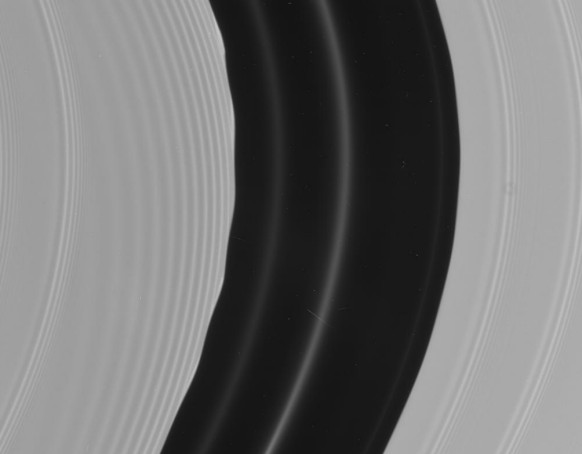The Encke Gap: A Moon Goes Here

Explanation:
Yesterday,
Cassini became the first
spacecraft to enter orbit around the
gas giant Saturn,
rocketing through a 25,000 kilometer wide gap in the
distant planet's
magnificent system
of icy rings at about 15 kilometers
per second.
Turning
to snap pictures, Cassini's narrow angle
camera recorded
this stunning close-up of a much smaller
gap in the rings, the Encke Gap.
A mere 300 kilometers wide, the Encke Gap is flanked by amazing
structures within
the
rings -- scalloped edges and patterns of density waves
are clear in the sharp image.
While the rings of Saturn are likely debris from the breakup
of fair-sized icy moon,
the Encke Gap itself is created by the
repeated passage of
a
tiny moon.
Only 20 kilometers wide that tiny
moon, Pan, was
also
detected
by Cassini's camera as the spacecraft approached the
Saturnian system.
Authors & editors:
Robert Nemiroff
(MTU) &
Jerry Bonnell
(USRA)
NASA Web Site Statements, Warnings,
and Disclaimers
NASA Official: Jay Norris.
Specific
rights apply.
A service of:
LHEA at
NASA /
GSFC
& Michigan Tech. U.

